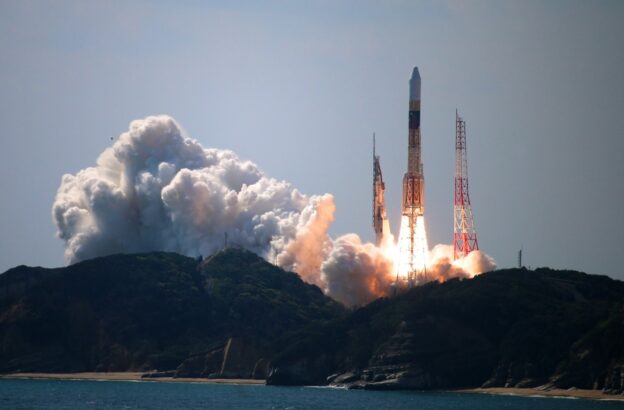Inspenet, September 11, 2023.
On September 7, Japan launched a lunar exploration space probe using a self-made H-IIA rocket and they hope that this mission will take them to the Moon in early 2024. Its main objective is to test extremely precise landing technology using a lightweight probe . This feat could transform future lunar missions and improve the quality of space exploration.
SLIM: the Japanese lunar exploration probe
Also known as the “lunar sniper,” Japan hopes to land SLIM within 100 meters of its target on the lunar surface.
“The big goal of SLIM is to demonstrate high-precision landing… to land where we want on the lunar surface, rather than landing where we can,” said Japan Aerospace Exploration Agency (JAXA) President Hiroshi. Yamakawa at a press conference.
”This will make it possible to land on planets with even more scarce resources than the Moon,” they indicated, adding that “there are no previous cases of precision landings on celestial bodies with significant gravity like the Moon.”
“This technology incorporates specialized cameras along with image recognition algorithms to identify dangerous obstacles, which could enable safe landing in areas of the Moon that are of great interest and rich in minerals. Additionally, due to its lower weight, there is a possibility that the probe could return to Earth with samples after its lunar exploration.
On top of the H-IIA rocket made by Mitsubishi Heavy Industries is SLIM, which stands for Intelligent Landing Module for Lunar Exploration in English. This probe is the first in the country that intends to make a controlled landing on the Moon .
If it achieves its goal, Japan will become the fifth country to achieve a controlled moon landing, after Russia’s Luna 25 probe, Japan’s private Hakuto-R mission and India’s historic success with its mission. Chandrayaan 3, which landed in the circumpolar region of the south pole of the Moon. However, it is expected to take at least three months for the Japanese probe to reach its lunar destination.
It is worth remembering that Japan experienced two failed lunar landing attempts last year. First, JAXA lost communication with the OMOTENASHI lander, leading to the failure of a landing attempt in November. Second, the Hakuto-R Mission 1 lander, developed by Japanese startup ispace, suffered an accident in April while trying to descend to the surface of the Moon.
One launch, several missions
The country’s ambition to become the fifth country to achieve a moon landing does not stop there. The rocket also carries the XRISM (X-ray Imaging and Spectroscopy Mission) probe, which will use electromagnetic signal detectors to investigate black holes, the formation of chemical elements and galaxy clusters.
Through the X-ray telescope, Japan seeks to address the great unknowns of the universe and overcome the confines of known physics. The XRISM mission aims to reveal mass and energy flows that provide information about the composition and evolution of celestial objects.
As far as we know, X-rays are emitted in the most energetic events and the hottest regions of the universe, including the masses of gas surrounding galaxy clusters. These masses of gas that remain in galaxy clusters represent vestiges of the life cycle of stars and analyzing the X-rays emitted by them could shed light on their content of chemical elements and draw a representation of how the universe has been enriched with these elements over time.
Source: https://urgente24.com/omni/japon-se-lanza-la-luna-revolucionar-las-misiones-espaciales-n560352/amp

